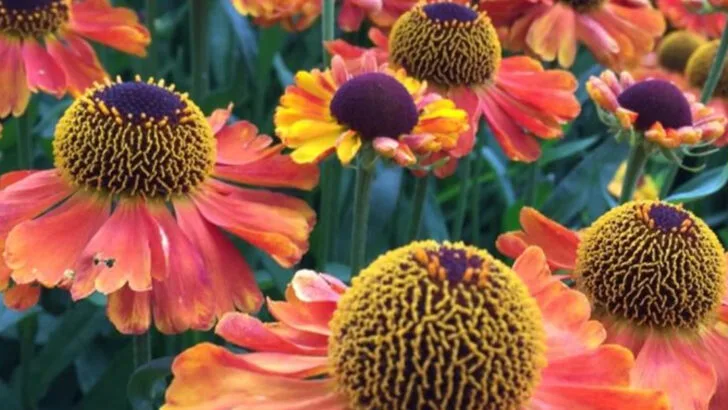Just when you think the show is over, the garden has one more act to offer. Late summer can be tricky—some flowers fade, the heat takes its toll, and borders start to look tired. But at Plantisima, we know that with the right plants, your garden can keep bursting with color well into the season’s final weeks.
In this article, we’ve rounded up 19 stunning late-summer bloomers that refuse to quit. From bold echinacea and breezy gaura to vibrant rudbeckia and Japanese anemones, these plants thrive in the heat and carry your garden’s energy into fall. Many even attract pollinators, adding movement and life just when things start to slow down.
To all our Plantisima readers who want their gardens to finish strong, not fade quietly—this list is your secret weapon. Because when the dog days hit, these flowers are just getting started.
Russian Sage

Russian Sage stands tall with its silvery-gray foliage, adding an elegant touch to any garden. Its lavender-blue flowers become the star of the show, dancing in the breeze and attracting pollinators. The contrast between its stem and blooms creates a stunning visual effect. Known for its drought resistance, Russian Sage thrives even in less-than-ideal conditions. Often found gracing borders, it brings a refined structure to plant arrangements. The subtle fragrance is an added bonus, making it a favorite among gardeners. Its long-lasting blooms ensure gardens stay colorful well into late summer. A true testament to nature’s resilience.
Sedum ‘Autumn Joy’
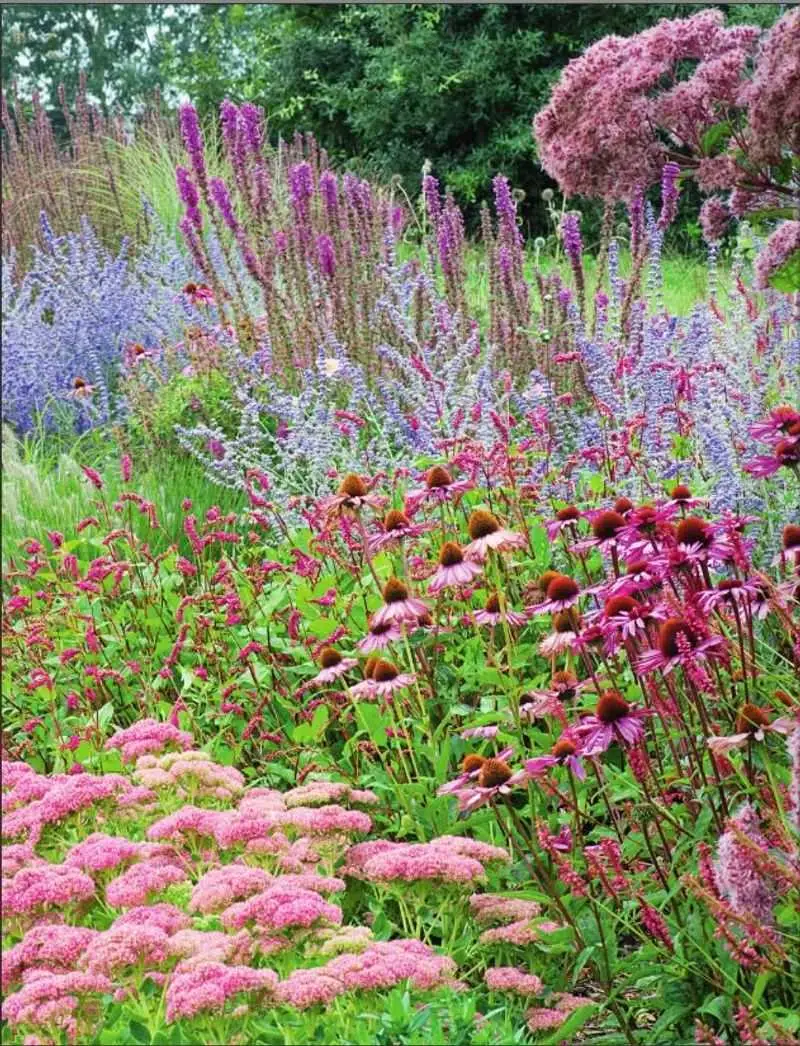
Sedum ‘Autumn Joy’ is a staple in many gardens thanks to its robust nature and striking appearance. Its succulent leaves store water, making it perfect for dry areas. As summer progresses, its pink flowers bloom, resembling small broccoli heads that change to a rusty red come autumn. This transformation offers a dynamic display of color. Its ability to thrive in poor soil conditions makes it versatile and low-maintenance. The plant’s textured leaves and floral clusters provide contrast and interest, attracting butterflies and bees alike. Sedum ‘Autumn Joy’ truly lives up to its name.
Black-Eyed Susan
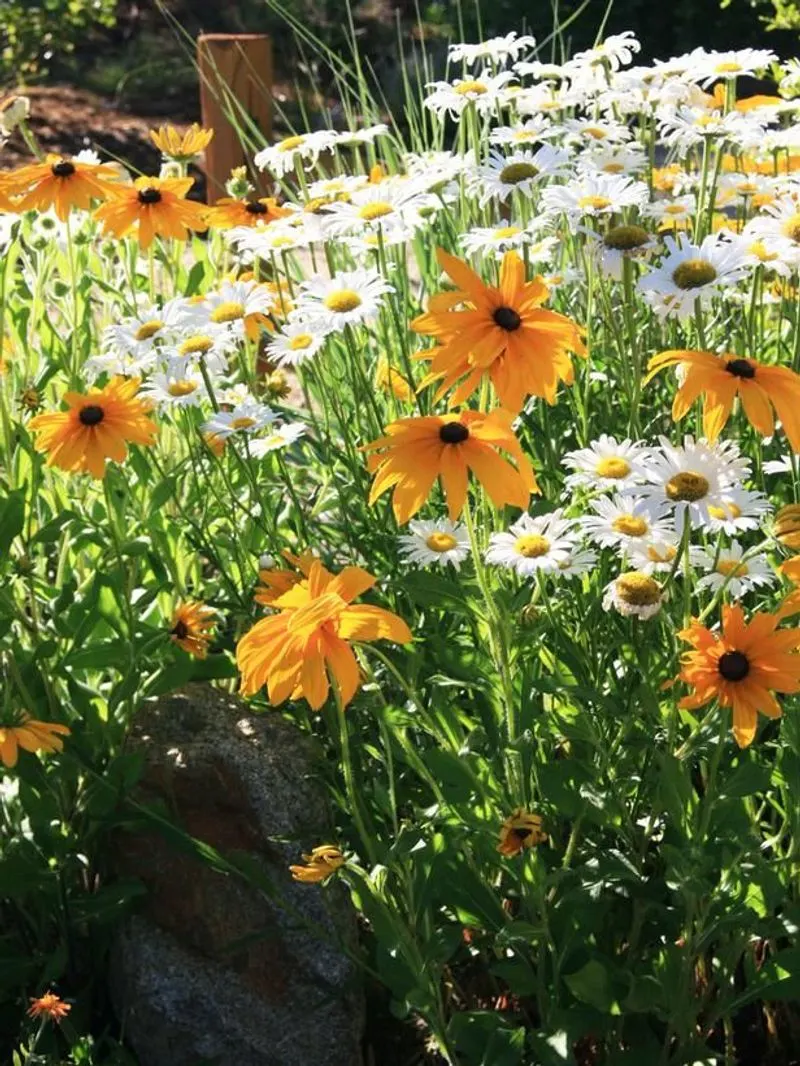
With their vivid golden petals and striking dark centers, Black-Eyed Susans are impossible to overlook. These cheerful flowers radiate warmth, embodying the spirit of late summer. As reliable garden companions, they resist drought and adapt to various soil types. Their bright blooms are not only visually appealing but also serve as a magnet for bees and butterflies. Planted in masses, they create a sea of yellow, infusing gardens with energy and life. The robust nature of Black-Eyed Susans ensures they remain a garden favorite, promising color long after other flowers have faded.
Japanese Anemone
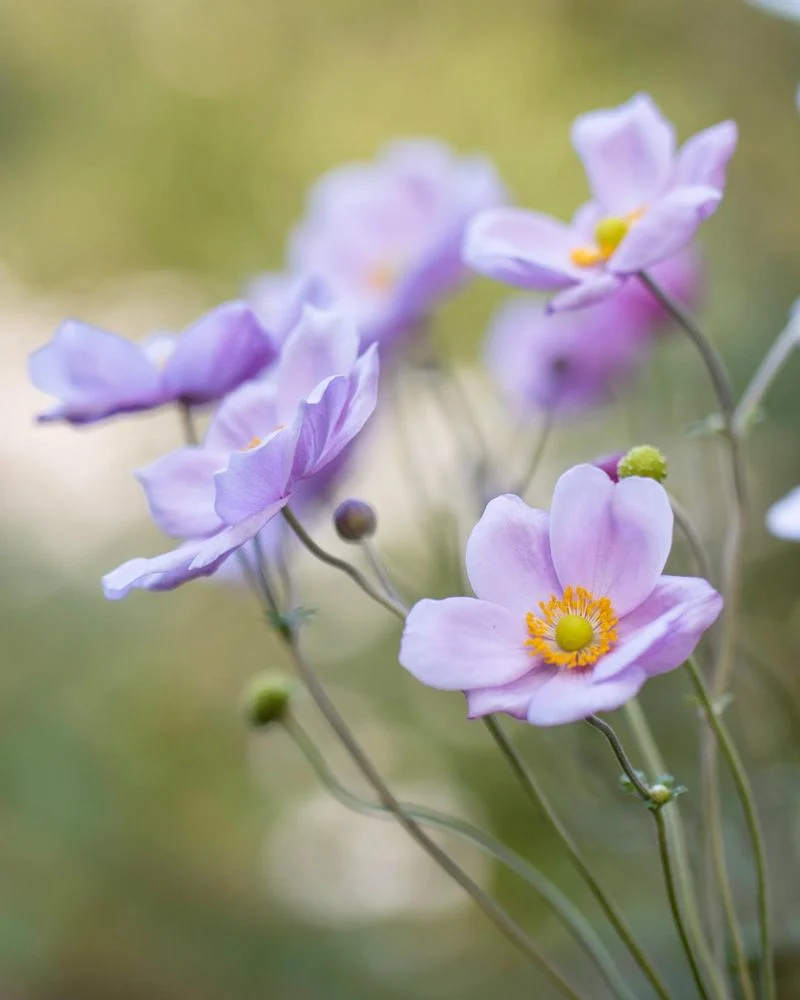
Japanese Anemones are the epitome of grace and elegance in late-summer gardens. Their delicate white and pink petals, paired with bright yellow centers, offer a soft touch amidst the greenery. These flowers sway gently with the wind, bringing a sense of calm and tranquility. Preferring shaded areas, they are perfect for those tricky spots in the garden. Despite their gentle appearance, they are hardy and can withstand the cooler nights of late summer. Japanese Anemones are a testament to the beauty found in simplicity, making them a cherished addition to any landscape.
Chrysanthemum
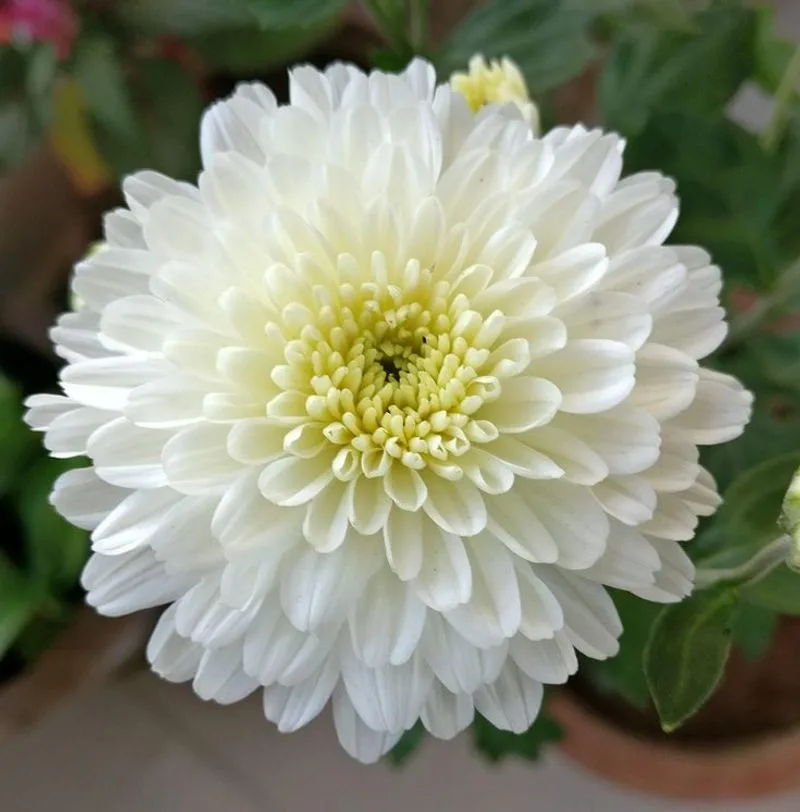
Chrysanthemums, or ‘mums’, are synonymous with late-summer floral displays. Known for their wide array of colors, they offer something for every garden palette. Their tightly packed petals create a bold statement, ensuring they stand out in any garden setting. Mums are celebrated not just for their beauty but also for their late blooming period, extending the garden’s colorful life into autumn. They’re versatile, thriving in full sun and well-drained soil. Their varied forms and colors make them a versatile choice for bouquets and garden layouts. Chrysanthemums are truly the stars of late summer.
Helenium
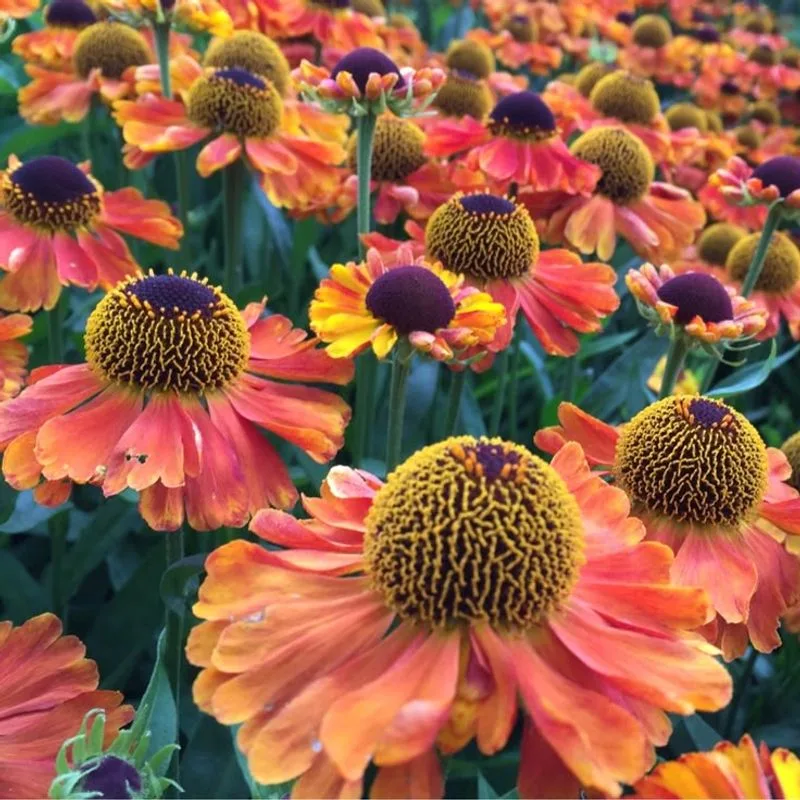
Helenium captivates with its fiery tones and robust presence. The daisy-like petals, ranging from sunny yellow to deep red, encircle a vibrant central cone, making a bold garden statement. Perfect for brightening up any border, Helenium is a favorite among pollinators, drawing in bees and butterflies with its nectar-rich blooms. Known for its hardiness, it thrives in full sun and well-drained soil, making it a reliable choice for gardeners. Its long flowering period ensures continuous color, bridging the gap between summer and autumn. Helenium is truly a garden showstopper.
Joe Pye Weed
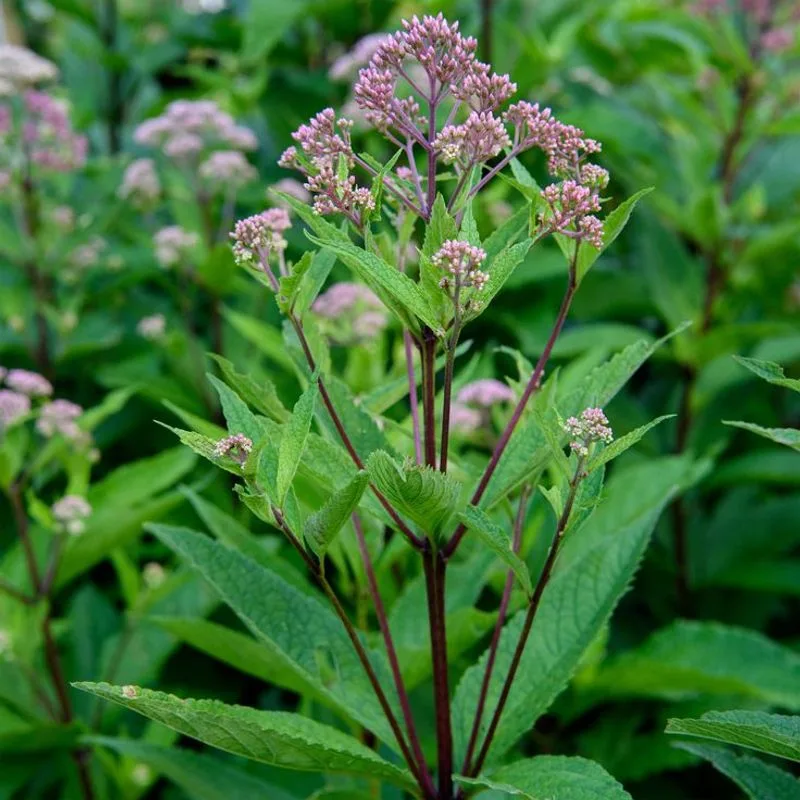
Don’t let the name fool you; Joe Pye Weed is anything but an unwanted plant. Standing tall, it commands attention with its fluffy clusters of pinkish-purple flowers. This plant is a magnet for butterflies, providing essential nectar late in the season. Despite its height, Joe Pye Weed is surprisingly easy to grow, thriving in moist, well-drained soil. It adds a natural, wild touch to gardens, blending seamlessly with native plants. As a perennial, it returns year after year, ensuring that gardens remain colorful and vibrant. A true garden treasure, Joe Pye Weed is not to be missed.
Goldenrod
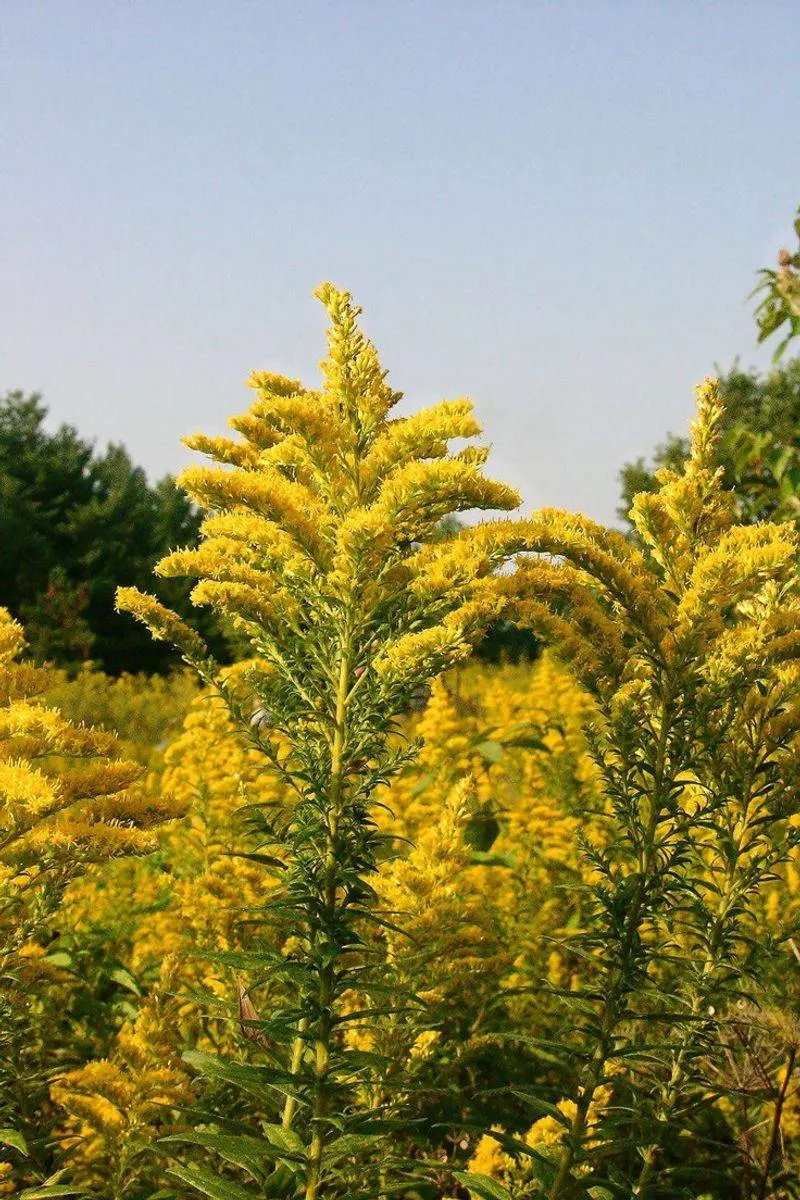
Goldenrod often gets a bad rap for causing allergies, but it’s actually the unsung hero of late-summer gardens. Its bright yellow flowers light up the landscape, creating a sunny meadow effect. This hardy perennial thrives in full sun and can tolerate poor soil, making it a low-maintenance option. Its tall, arching stems add structure and height to any garden. As a native plant, it supports local wildlife, attracting various pollinators. Goldenrod’s cheerful blooms persist into autumn, ensuring gardens remain lively and colorful. It’s time to give this golden gem the recognition it deserves.
Aster
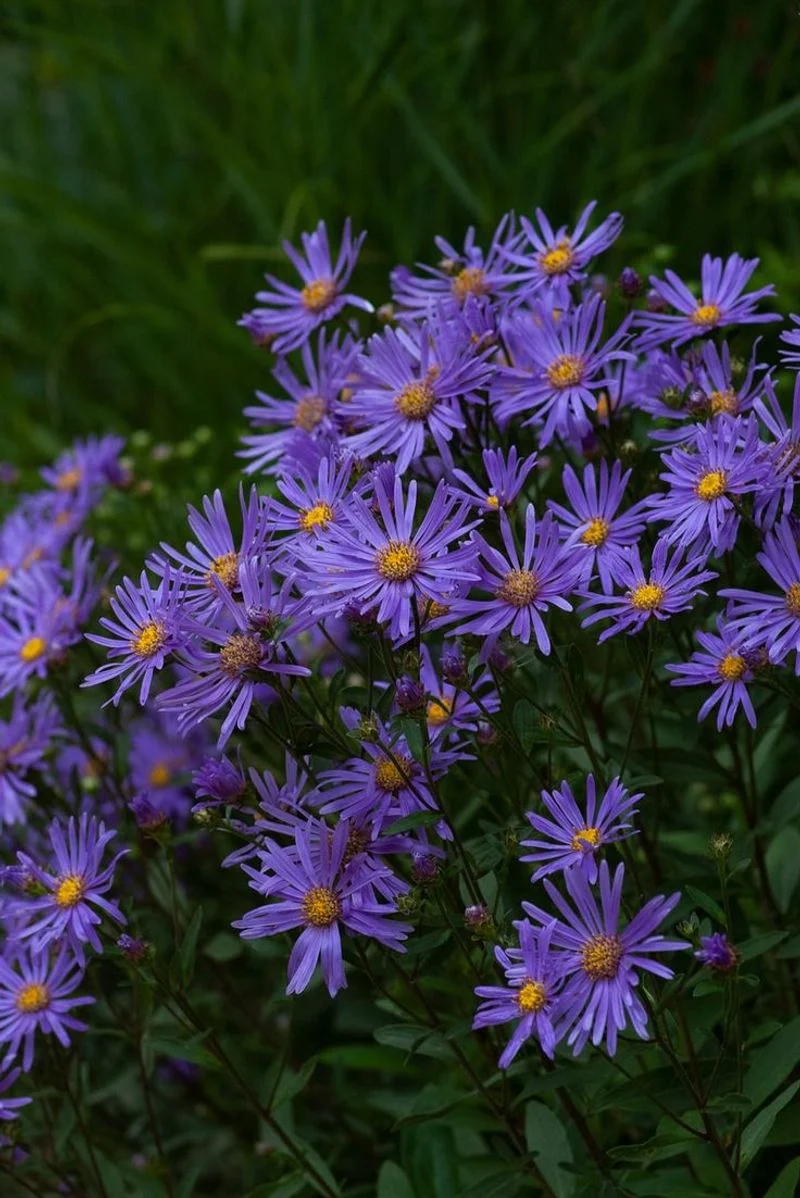
Asters bring a splash of color to late-summer gardens with their starry, daisy-like flowers. Available in shades of purple, pink, and blue, they add diversity and vibrancy. These perennials are known for their long blooming season, stretching well into autumn. Thriving in full sun and well-drained soil, they are easy to care for and perfect for borders or mass plantings. Asters attract a multitude of pollinators, making them an essential part of any wildlife-friendly garden. Their resilient nature ensures that they return year after year, keeping gardens lively and colorful.
Caryopteris
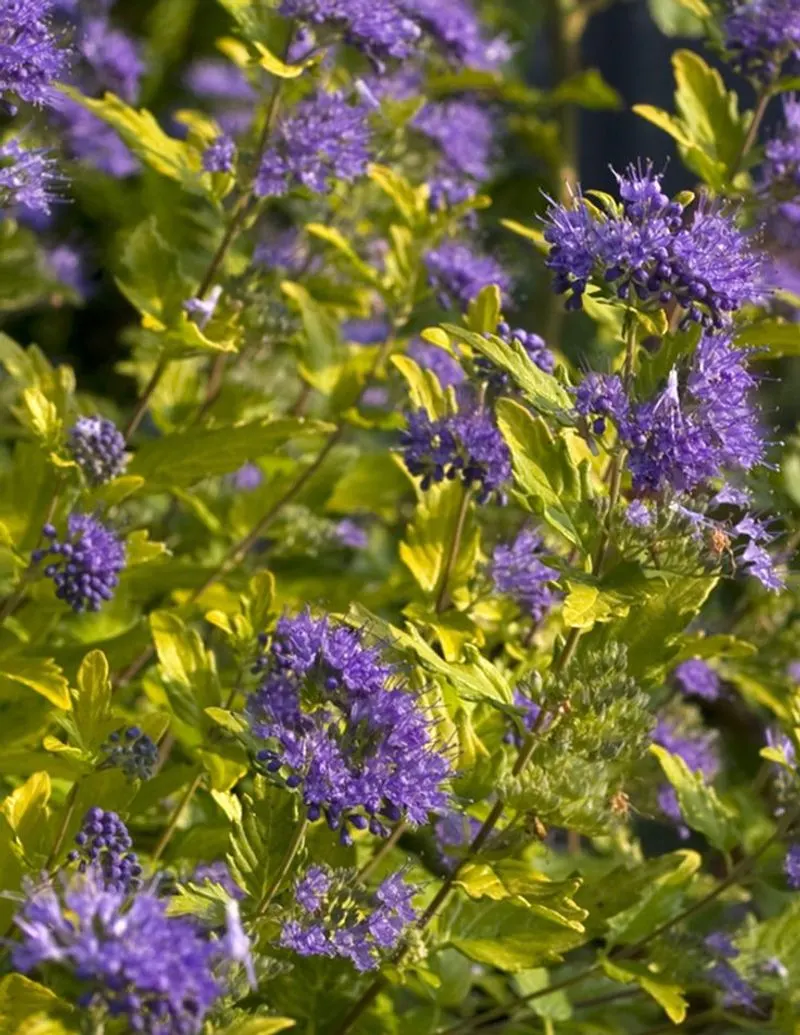
Caryopteris, often called the Blue Mist Shrub, offers a delightful burst of blue in late summer. Its compact form and silvery-green foliage provide a striking contrast to its vibrant blooms. This shrub is not only visually appealing but also attracts an array of pollinators, including bees and butterflies. Caryopteris thrives in full sun and well-drained soil, making it a low-maintenance choice for gardeners. Its ability to withstand drought and poor soil conditions adds to its appeal. As a late bloomer, Caryopteris ensures gardens remain colorful and inviting as the seasons change.
Turtlehead
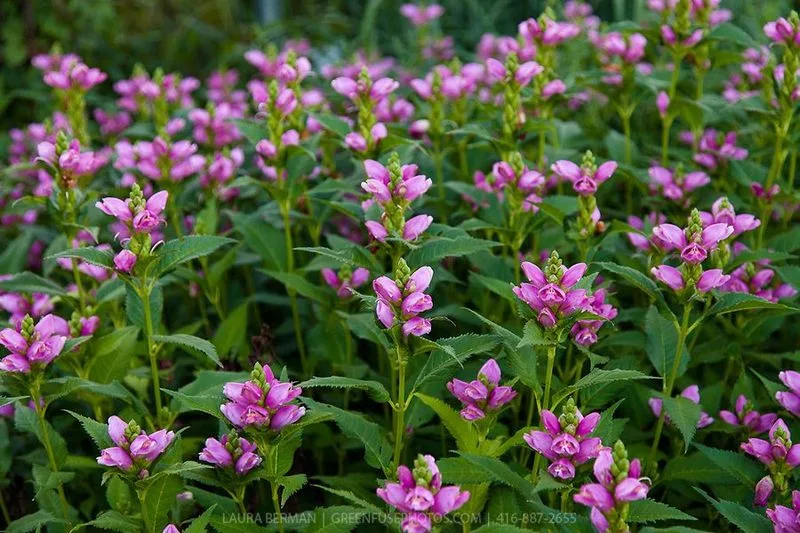
Turtlehead, with its distinctive blooms, captures the imagination of gardeners. The flower clusters resemble a turtle’s head, offering a whimsical touch to the landscape. This plant thrives in moist, well-drained soil, making it ideal for wet areas or near water features. Turtlehead’s pink or white flowers attract bees and butterflies, contributing to a vibrant ecosystem. Its sturdy stems and lush foliage provide structure and interest, ensuring gardens remain appealing late into the season. Turtlehead is a testament to nature’s creativity, offering both beauty and ecological benefits.
Coreopsis
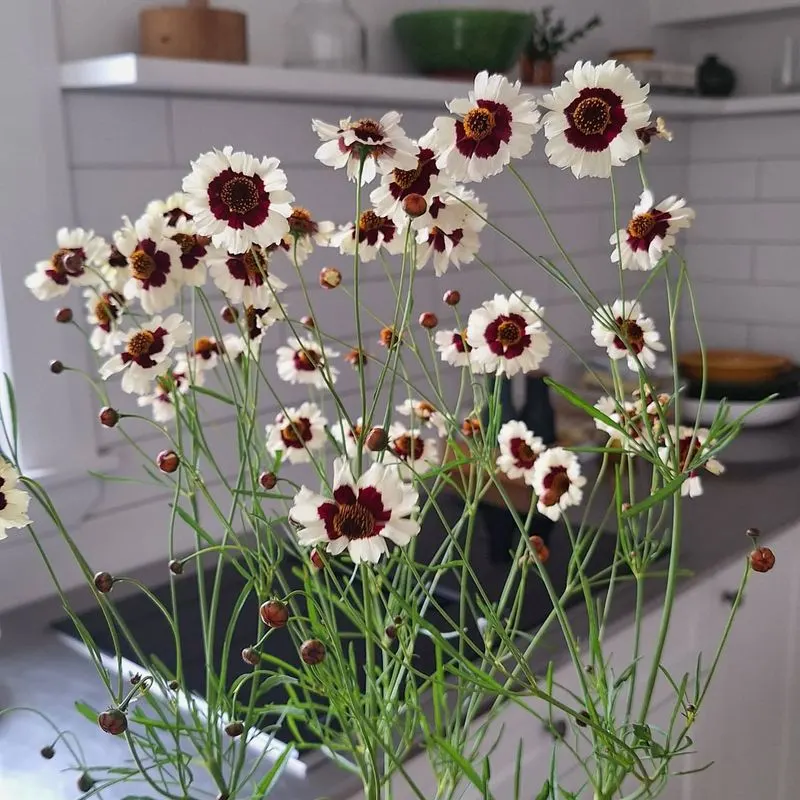
Coreopsis, with its cheerful yellow blooms, adds a splash of sunshine to any garden. The daisy-like flowers sit atop delicate, feathery foliage, creating a lively and dynamic display. This perennial is known for its long blooming period, providing color from late summer into autumn. Coreopsis is low-maintenance, thriving in full sun and well-drained soil. Its ability to attract butterflies and resist deer makes it a favorite among gardeners. The plant’s vibrant flowers and easygoing nature ensure that it remains a garden staple, offering beauty and charm with minimal effort.
Coneflower (Echinacea)
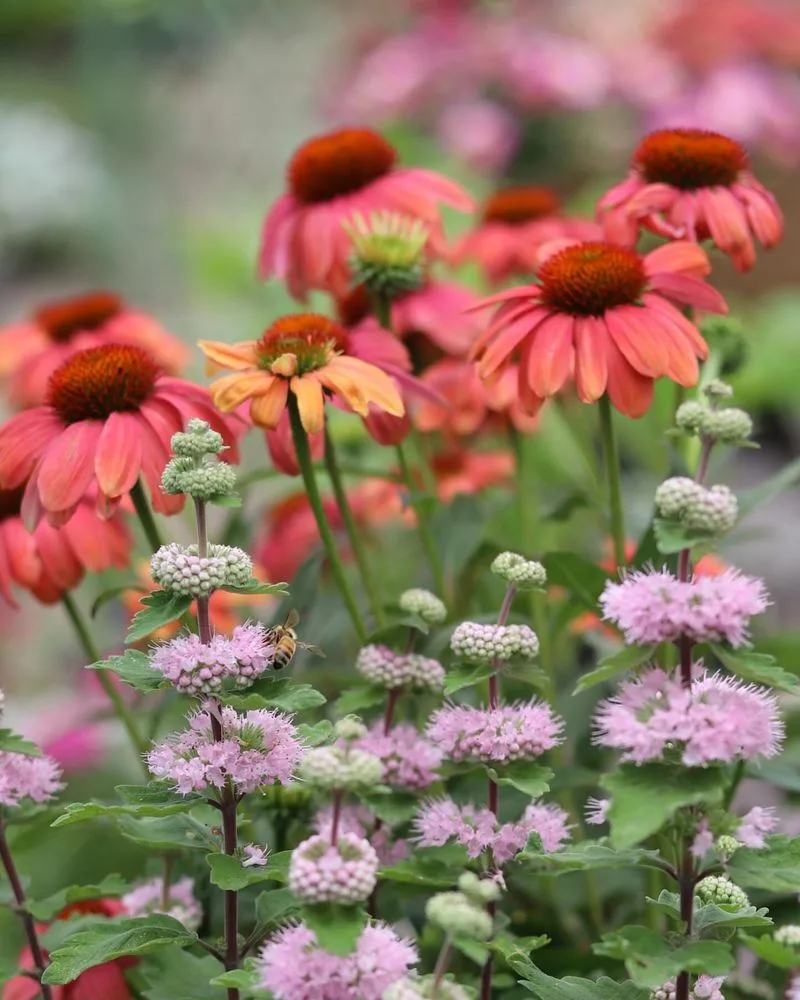
Coneflowers, or Echinacea, are garden classics known for their striking appearance and resilience. The large, daisy-like flowers, adorned with prominent central cones, capture the eye. Available in pink, purple, and even white, they offer diversity and appeal. Coneflowers thrive in full sun and well-drained soil, requiring minimal care. Their nectar-rich blooms attract pollinators, making them essential for wildlife-friendly gardens. As a perennial, they return year after year, ensuring a continuous display of color. Coneflowers are not only beautiful but also hardy, standing up to heat and drought with ease.
Hardy Hibiscus
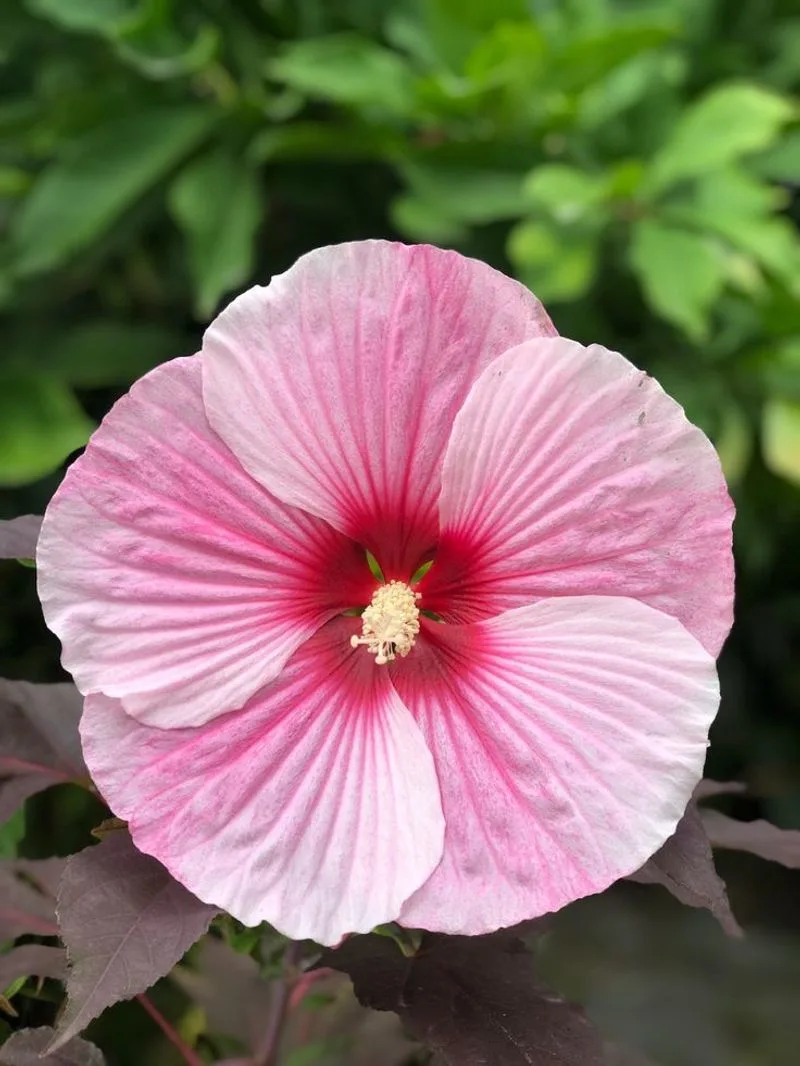
Hardy Hibiscus brings a touch of the tropics to late-summer gardens. Its large, showy flowers, available in shades of red, pink, and white, create a dramatic focal point. Despite their exotic appearance, these hibiscus plants are surprisingly hardy, thriving in temperate climates. They prefer full sun and well-drained soil but can adapt to various conditions. The flowers’ impressive size and vibrant colors make them a standout choice for borders or as specimen plants. Hardy Hibiscus adds a bold, tropical flair to gardens, ensuring they remain colorful and captivating well into late summer.
Rudbeckia
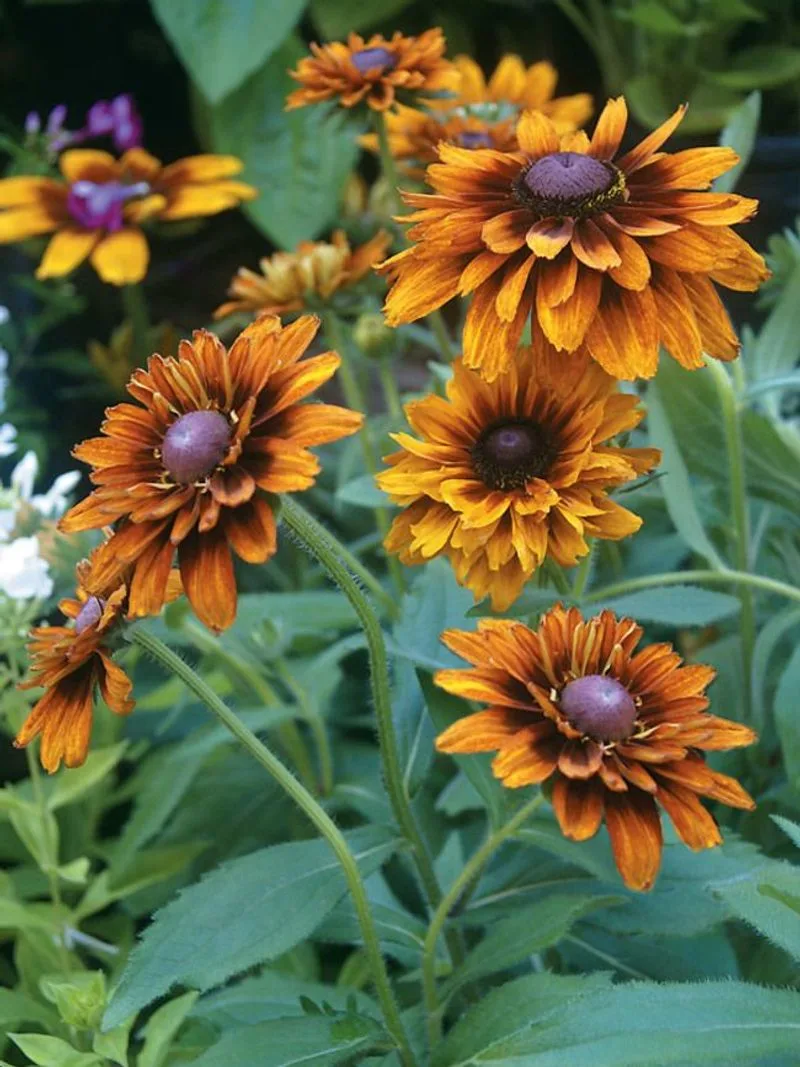
Rudbeckia, often mistaken for its cousin the Black-Eyed Susan, offers its own unique charm. The bright yellow or orange petals surround a dark central cone, creating a striking contrast. These hardy perennials thrive in full sun and well-drained soil, making them a favorite among gardeners. Their long blooming season ensures gardens remain vibrant from late summer into autumn. Rudbeckia’s nectar-rich flowers attract butterflies and bees, supporting local wildlife. Their bold appearance and resilience make them an essential part of any garden, bringing warmth and cheer as other flowers fade.
Verbena
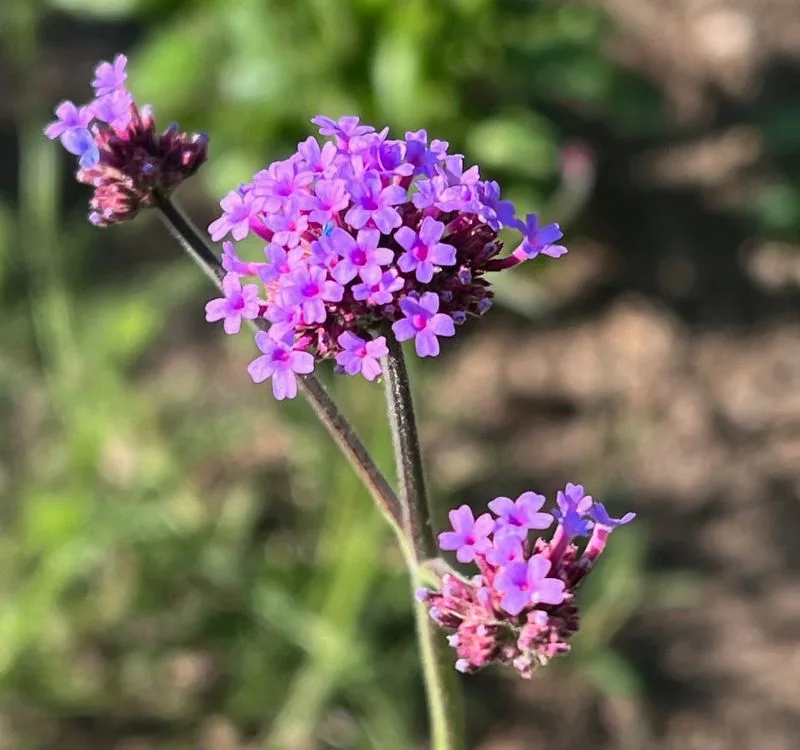
Verbena, with its delicate clusters of flowers, adds a touch of elegance to any garden. Available in shades of purple, pink, and white, they offer a subtle yet captivating display. Verbena is known for its long flowering period, providing color well into the late summer months. This plant thrives in full sun and well-drained soil, requiring minimal maintenance. Its ability to attract pollinators makes it a valuable addition to wildlife-friendly gardens. Verbena’s understated beauty and resilience ensure it remains a garden favorite, offering continuous color and charm throughout the season.
Salvia
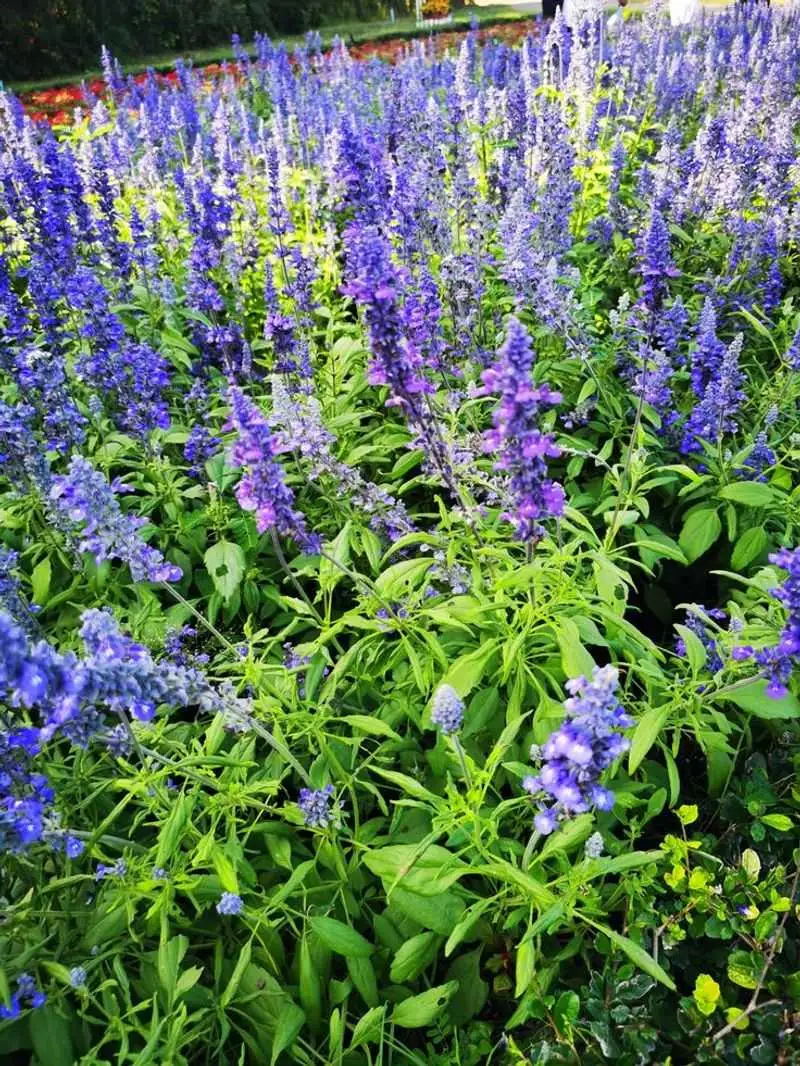
Salvia’s tall spikes of blue or purple flowers add a vertical element to garden landscapes. Known for their vibrant colors and aromatic foliage, these plants are a delight for the senses. Salvia thrives in full sun and well-drained soil, making it a low-maintenance choice for gardeners. Its nectar-rich blooms attract bees and butterflies, supporting local ecosystems. As a perennial, Salvia returns each year, ensuring gardens remain colorful and lively. The contrast between its bold flowers and gray-green leaves creates a striking visual, making Salvia a standout choice for any garden.
Montauk Daisy
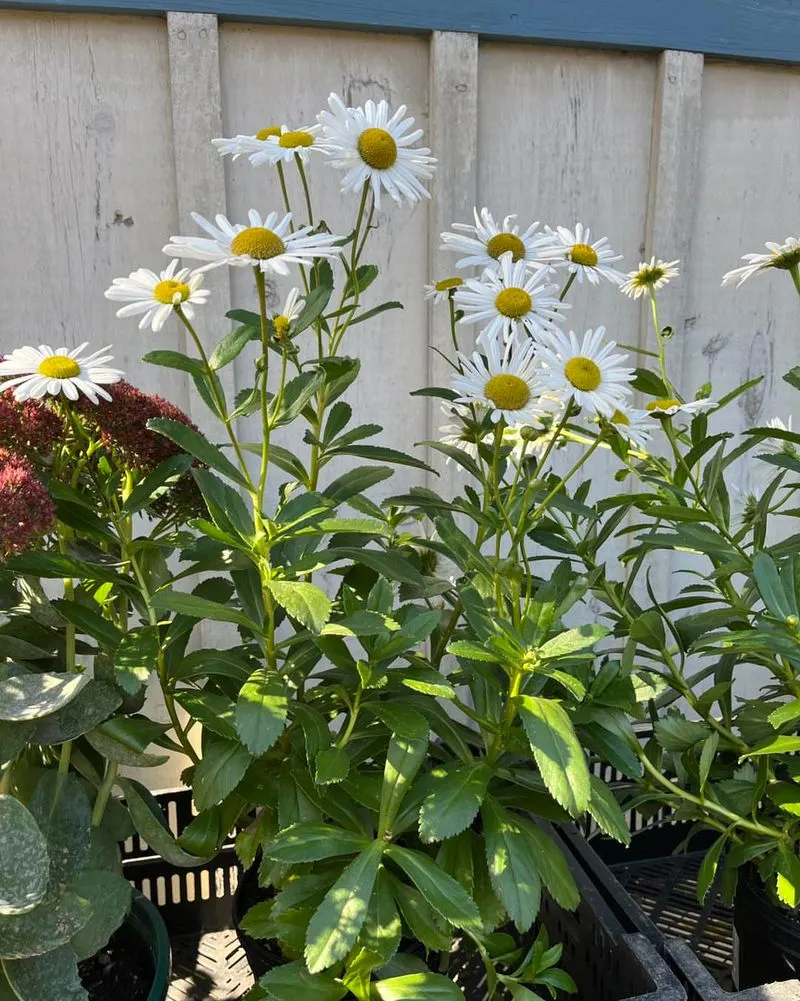
Montauk Daisy, also known as Nipponanthemum nipponicum, is a robust plant that brings a coastal vibe to gardens. Its large, white, daisy-like flowers bloom late in the season, offering a fresh burst of color. The thick green foliage provides structure and contrast, ensuring the flowers stand out. Montauk Daisies thrive in full sun and well-drained soil, making them a low-maintenance choice. Their resilience to salt and coastal winds makes them ideal for seaside gardens. With their charming blooms and hardy nature, Montauk Daisies keep gardens vibrant and appealing as summer fades.
Tithonia (Mexican Sunflower)
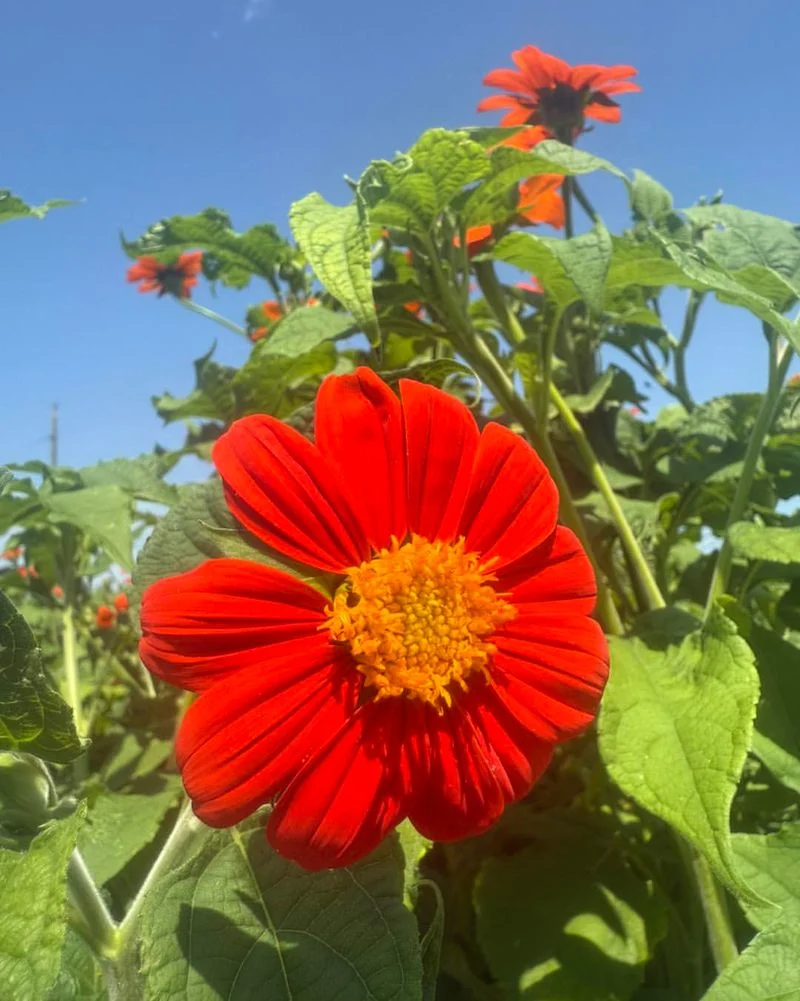
Tithonia, known as the Mexican Sunflower, brings a fiery touch to late-summer gardens. With tall stems and bright orange blooms, it infuses spaces with warmth and vibrancy. This annual thrives in full sun and well-drained soil, making it an easy addition to garden layouts. Its flowers attract butterflies and hummingbirds, adding movement and life. Tithonia’s bold appearance and fast growth rate make it a popular choice for gardeners looking to make a statement. Despite its tropical origins, it adapts well to various climates, ensuring gardens remain colorful and inviting.

